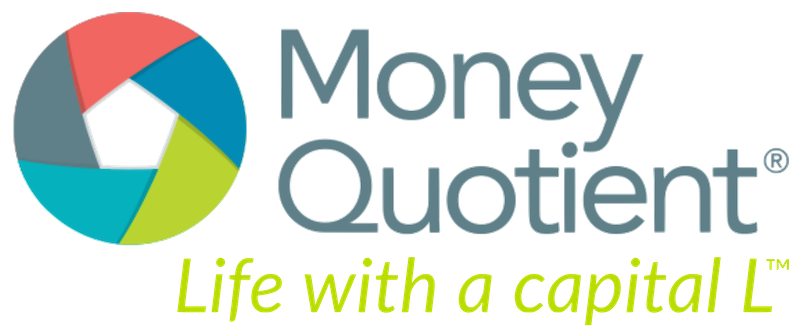*Be sure to read the author’s note and special announcement at the end of this blog post!
 In the Happiness Hypothesis, psychologist Jonathan Haidt wrote that long ago he developed a metaphor to help him make sense of his often self-sabotaging behaviors:
In the Happiness Hypothesis, psychologist Jonathan Haidt wrote that long ago he developed a metaphor to help him make sense of his often self-sabotaging behaviors:
The image that I came up with for myself, as I marveled at my weakness, was that I was a Rider on the back on an Elephant. I’m holding the reins in my hands, and by pulling one way or the other I can tell the Elephant to turn, to stop, or to go. I can direct things, but only when the Elephant doesn’t have desires of his own. When the Elephant really wants to do something, I’m no match for him.
Later he realized a broader application to his metaphor. He wrote that to understand the most important ideas in psychology, we need to consider how the mind is divided into parts that sometimes conflict. The Rider represents our rational side that engages in conscious, controlled thought and can plan for the future. In contrast, the Elephant represents our emotional side including visceral reactions, intuition, and our need for more immediate gratification.
He also explained, “The Elephant and the Rider each have their own intelligence, and when they work together well they enable the unique brilliance of human beings.”
When Chip and Dan Heath wrote their best-selling book Switch: How to Change Things When Change is Hard, they adopted Haidt’s metaphor as the organizing theme in their book. They also added a third element, the Path, which represents the environment or context in which the Rider and the Elephant operate.
According to the Heaths, all human change—whether large or small—depends on these three factors:
- Direct the Rider
- Motivate the Elephant
- Shape the Path
They write that when change efforts fail, it is usually the Elephant’s fault because most types of change usually require short-term sacrifices for long-term payoffs. In other words, the Rider can’t keep the Elephant on the path long enough to reach the desired destination:
Most of us are all too familiar with situations in which our Elephant overpowers our Rider. You’ve experienced this if you’ve ever slept in, overeaten, dialed up your ex at midnight, procrastinated, tried to quit smoking and failed, skipped the gym, gotten angry and said something you regretted, abandoned your Spanish or piano lessons, refused to speak up in a meeting because you were scared, and so on.
In other words, the Rider can’t keep the Elephant on the path long enough to reach the desired destination. On the other hand, the Rider can get stuck in analysis paralysis and never take action.
Therefore, your change strategy needs to appeal to both—the Rider provides the planning and direction, and the Elephant provides the energy.
To make progress toward a goal, whether it’s noble or crass, requires the energy and drive of the Elephant. And this strength is the mirror image of the Rider’s great weakness: spinning his wheels. The Rider tends to overanalyze and over think things. … A reluctant Elephant and a wheel-spinning Rider can both ensure nothing changes. But when Elephants and Riders move together, change can come easily.
In addition, there is one more important element to consider. The Heaths call this third factor shaping the Path and explain that what often looks like a people problem is a situation (aka environment) problem.
...to make the changes that are important to us, we have to influence our hearts, minds, and our surroundings Click To TweetThey explain, “When you shape the Path you make change more likely, no matter what’s happening with the Rider and Elephant.” Shaping the Path considers the needs of the Rider and the Elephant, and puts in place conditions that support the change efforts of both.
Chip and Dan Heath also suggest the development of habits and routines as ways to shape the environment because they create a kind of “behavioral autopilot.” In addition, they encourage the use of checklists to remind us of important behaviors that might otherwise be overlooked.
In other words, the Heaths believe that in order to make the changes that are important to us, we have to influence our hearts, minds, and our surroundings:
We can say this much with confidence: When change works, it tends to follow a pattern. The people who change have clear direction, ample motivation, and a supportive environment. In other words, when change works, it’s because the Rider, the Elephant, and the Path are all aligned in support of the switch.
-Carol Anderson
*Authors Note: At Money Quotient, we have long recommended Chip and Dan Heath’s book, Switch, as the perfect handbook for understanding and accelerating positive change. Therefore, I’m very excited about a brand new online course, Facilitating Positive Change in Your Client’s Financial Lives, which has been added to the MQ Learning Opportunities calendar. For the first time, we will be offering a 4-session online course with recorded lectures, student interaction via an online discussion forum, and reading assignments for our textbook of choice: Switch: How to Change when Change is Hard. This course will be taught by MQ Partner and Research & Education Task Force Member Thom Allison, and we expect it to be accepted for 10 CFP® CE. The launch date is June 6th. To learn more or and/or to register, click here.
